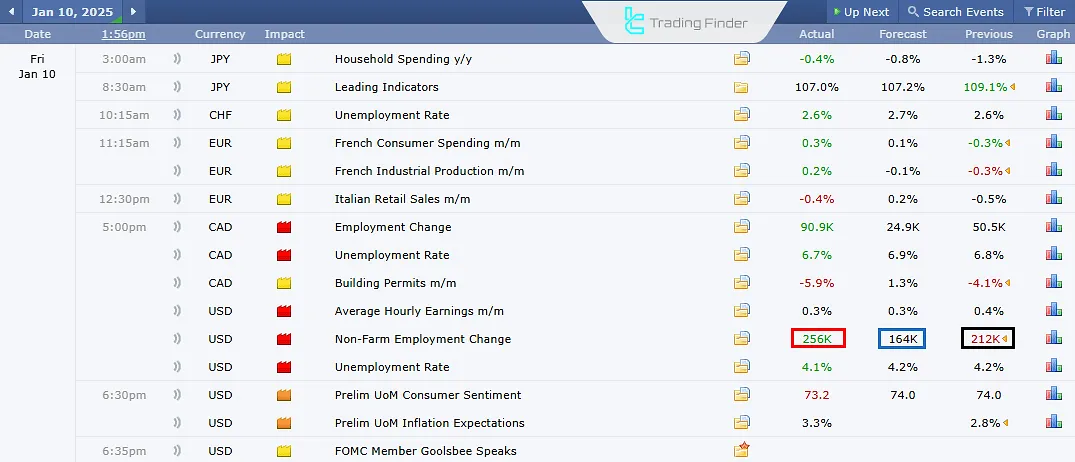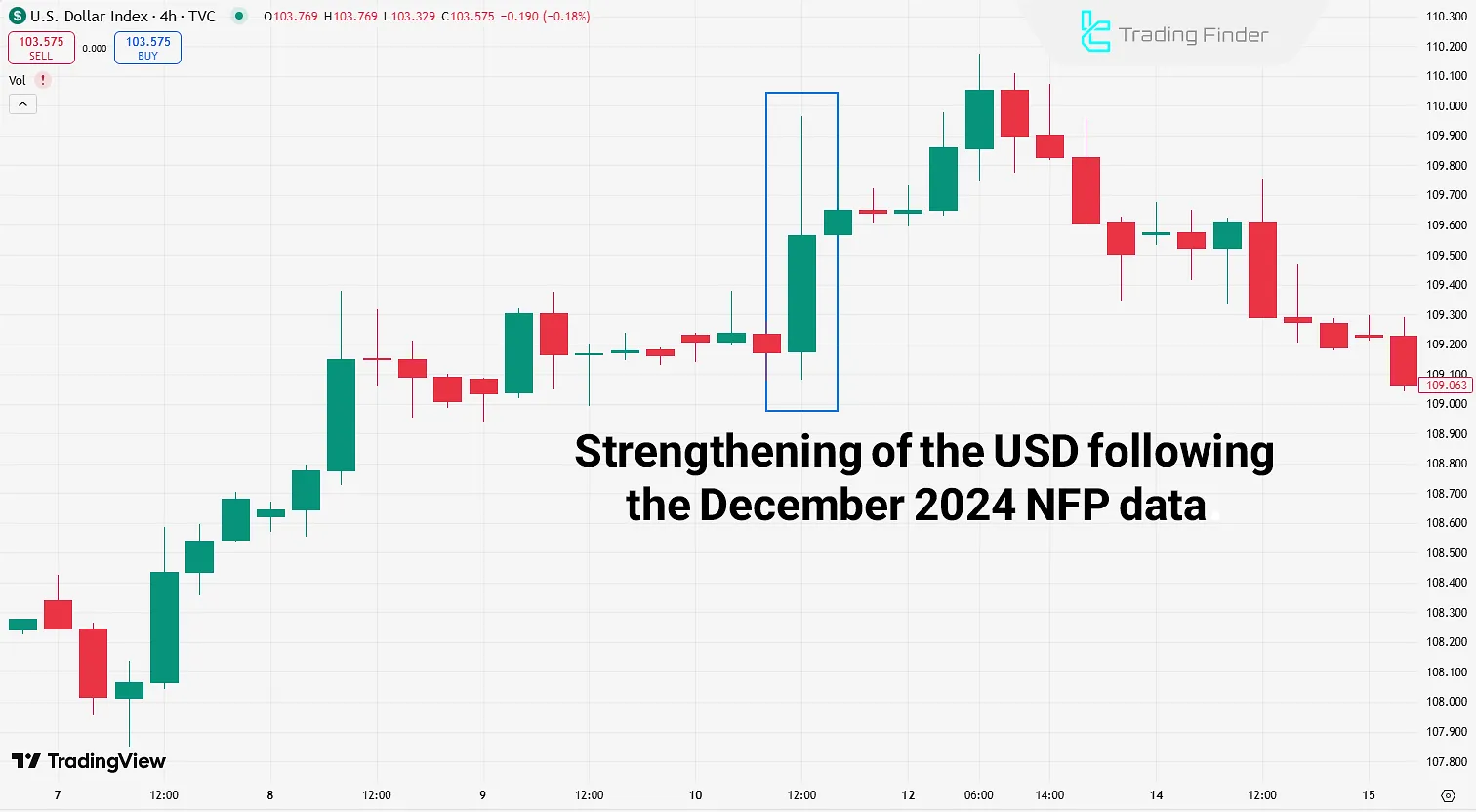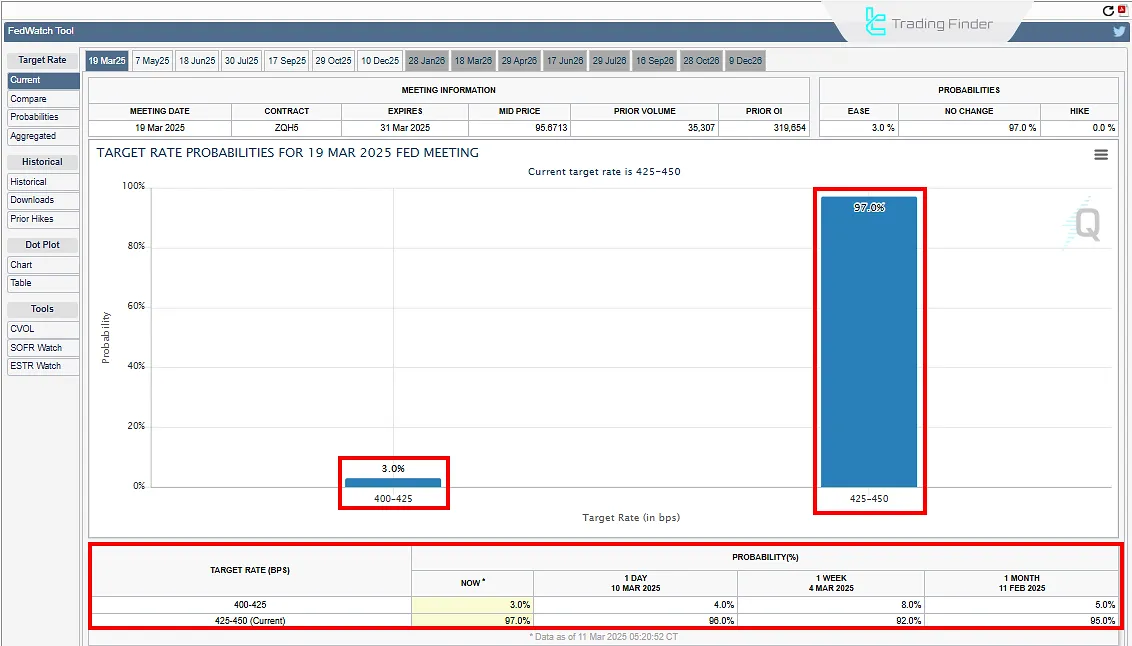Expectations in financial markets are a key driver of price volatility before the actual data is released. In fact, traders buy or sell based on their market expectations and forecasts for future data, and this behavior often drives market fluctuations.

Market expectations can stem from anticipated economic or political events, interest rate changes, or other influential factors in financial markets.
Market Expectations vs. Actual Data
To identify market volatility after a data release, one must examine the forecasts' proximity to the actual figures. Economic reports are usually listed with three parameters:
- Previous
- Forecast
- Actual

In this image, the previous (black), expectations (blue), and actual (red) values for the NFP (Non-Farm Payroll) data for December 2024 are shown. Here’s what each of these terms means:
- Previous: The previous report of the same data; used for comparison with the new release and sometimes revised upon the latest release;
- Forecast (Expectations): Analysts’ predictions. The market moves based on this estimate before the actual data is released;
- Actual: The official number reported by the respective institution.

In this NFP case, where the actual data came in much stronger than expectations, the market reacted with a strong rally in the dollar.
Why Are Expectations Important?
The market always moves based on expectations around data or a specific event. Therefore, understanding and predicting market expectations is highly important for trading. For example, consider the dollar strengthening ahead of the 2024 U.S. elections.
Before the election, the U.S. dollar strengthened due to Trump’s threats of increasing import tariffs, raising concerns about economic inflation and interest rate reduction disruptions—even though he had not yet taken office and no tariffs were actually imposed.
People anticipated that Trump’s future policies would lead to a stronger dollar. As a result, demand for the dollar increased before any policy implementation.
What Does “Priced In” Mean in Financial Markets?
“Priced in” or “price being priced in” refers to the impact of expectations on price.
For example, suppose economic data indicates that the Federal Reserve (the U.S. central bank) is likely to cut interest rates at its next meeting.
In this scenario, despite the rate cut not having occurred yet, market expectations for the change cause the U.S. dollar to weaken in the forex market. In fact, traders begin selling the dollar in advance.
In this case, it’s said that “the interest rate cut is priced in.”
Since markets are always anticipating future data, one can say that the market is constantly pricing in expectations of future data.
Data Revisions
Just as newly released actual data is important, revisions of previous data (upward or downward) can also cause market volatility depending on how much they differ from the prior reports.
For instance, imagine it’s June, and Switzerland’s inflation trend is negative. The central bank's dovish stance, aiming to boost demand and restore inflation, weakens the Swiss franc.
However, if the inflation figure for the previous month (May) is revised upward from -0.2% to -0.1% alongside the June data release, the franc might temporarily strengthen—even though inflation remains negative and the dovish stance remains.
That’s because the inflation was less negative than market expectations.
Expectations Regarding Interest Rate Changes
Expectations in financial markets are not limited to economic data—they include political-economic events such as speeches by key government officials, geopolitical tensions, and central bank interest rate meetings.
Ahead of interest rate decisions, traders use available information to predict the outcome (increase, decrease, or no change). These predictions are what we call market expectations.
Economic data often shape these expectations. For example, if data show disinflation or a sharp decline in growth at the end of a tightening cycle, expectations for rate cuts increase—usually weakening the currency. The reverse also holds true.
Where to Track Market Expectations for Federal Reserve Rate Changes?
The CME FedWatch Tool is a reliable source for tracking expectations of interest rate changes by the Federal Reserve.

This image presents the market expectations from the CME FedWatch Tool. According to the snapshot, 97% of market participants expect the rate to remain unchanged at the next meeting, while only 3% expect a cut.
Below the chart, changes in expectations over the past day, week, and month can also be observed.
Conclusion
Expectations of future data often drive price fluctuations in financial markets. Traders act based on their market expectations and forecasts.
Upcoming data and events are continuously priced into the market; hence, traders should always pay attention to the impact of expectations on price.





